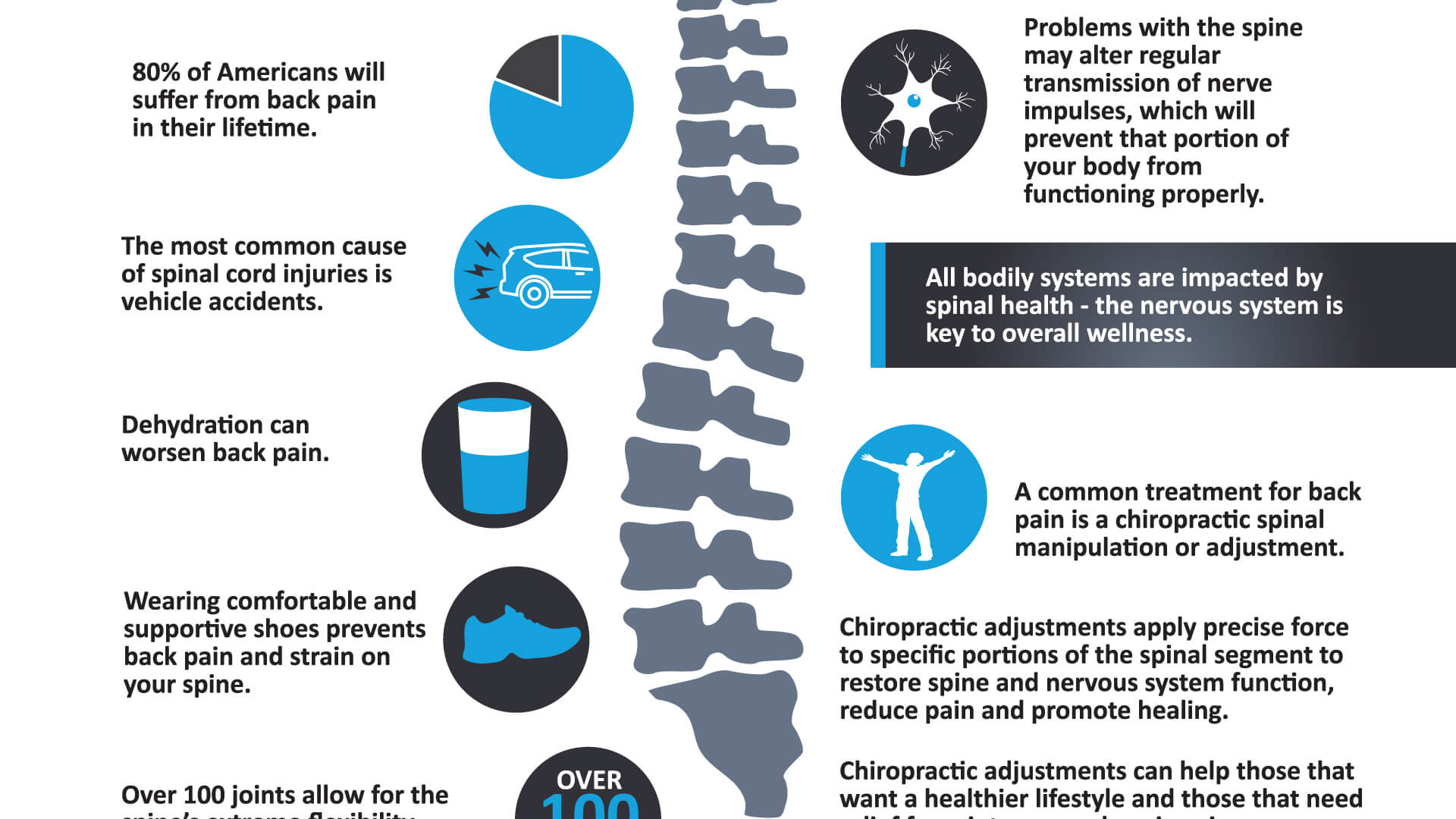Mitigate Back Pain By Taking A Look At The Everyday Tasks That Could Be Contributing Elements; Even Small Changes Can Assist You Achieve A Life Without Discomfort
Mitigate Back Pain By Taking A Look At The Everyday Tasks That Could Be Contributing Elements; Even Small Changes Can Assist You Achieve A Life Without Discomfort
Blog Article
Writer-Vega Svenningsen
Preserving correct stance and preventing common risks in everyday activities can significantly impact your back wellness. From exactly how austin preferred rest at your desk to how you raise heavy objects, little modifications can make a huge distinction. Envision a day without the nagging neck and back pain that hinders your every relocation; the solution may be easier than you assume. By making a few tweaks to your daily practices, you could be on your means to a pain-free existence.
Poor Pose and Sedentary Lifestyle
Poor position and a sedentary lifestyle are two significant contributors to neck and back pain. When you slouch or suspicion over while resting or standing, you put unnecessary strain on your back muscular tissues and spine. This can cause muscular tissue inequalities, tension, and ultimately, chronic neck and back pain. In addition, sitting for long periods without breaks or exercise can deteriorate your back muscle mass and result in stiffness and discomfort.
To battle inadequate stance, make a conscious initiative to rest and stand up right with your shoulders back and lined up with your ears. Remember to keep your feet level on the ground and prevent crossing your legs for extended periods.
Incorporating routine extending and reinforcing exercises into your daily routine can additionally help boost your position and ease back pain connected with an inactive lifestyle.
Incorrect Training Techniques
Inappropriate training methods can significantly add to pain in the back and injuries. When you lift heavy things, keep in mind to flex your knees and use your legs to lift, as opposed to depending on your back muscles. Stay clear of turning your body while training and keep the item near your body to decrease pressure on your back. It's critical to maintain a straight back and prevent rounding your shoulders while lifting to stop unnecessary pressure on your back.
Always evaluate the weight of the object prior to raising it. If it's as well hefty, request for aid or usage equipment like a dolly or cart to move it securely.
Remember to take breaks throughout raising tasks to provide your back muscular tissues a possibility to relax and protect against overexertion. By implementing proper lifting strategies, you can avoid back pain and lower the danger of injuries, guaranteeing your back remains healthy and solid for the long term.
Absence of Routine Exercise and Extending
A sedentary lifestyle without routine workout and stretching can significantly add to pain in the back and discomfort. When you don't participate in physical activity, your muscular tissues become weak and inflexible, leading to bad pose and raised stress on your back. Routine exercise helps enhance the muscle mass that support your spinal column, enhancing security and decreasing the danger of neck and back pain. Integrating extending right into your regimen can also boost adaptability, stopping tightness and pain in your back muscles.
To prevent pain in the back brought on by a lack of exercise and stretching, aim for at the very least 30 minutes of moderate exercise most days of the week. Include workouts that target your core muscular tissues, as a solid core can assist alleviate pressure on your back.
Furthermore, take breaks to extend and move throughout the day, specifically if you have a workdesk job. Straightforward stretches like touching your toes or doing shoulder rolls can assist eliminate stress and avoid neck and back pain. Focusing on normal workout and extending can go a long way in keeping a healthy back and decreasing discomfort.
Conclusion
So, keep in mind to sit up directly, lift with your legs, and remain energetic to stop pain in the back. By making basic modifications to your daily habits, you can prevent the discomfort and constraints that include back pain. Look after types of back pain and muscle mass by exercising good stance, appropriate lifting strategies, and routine workout. Your back will thank you for it!
